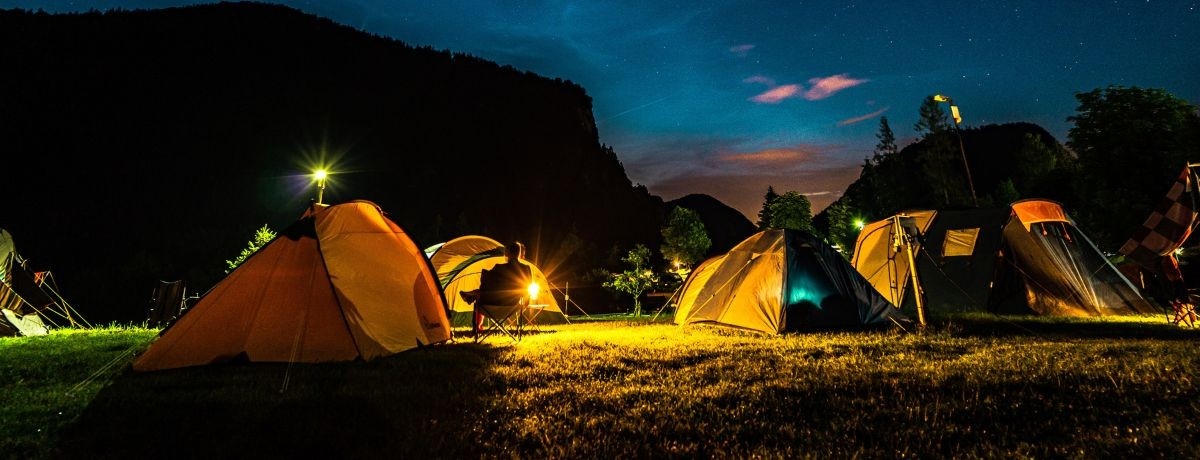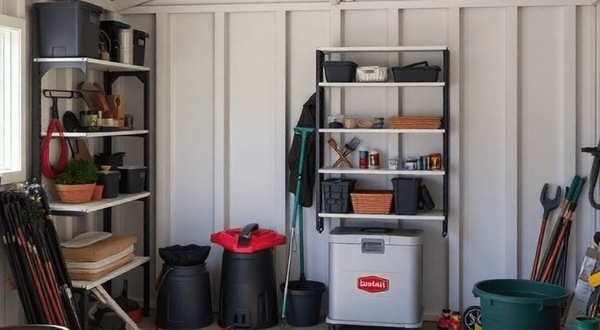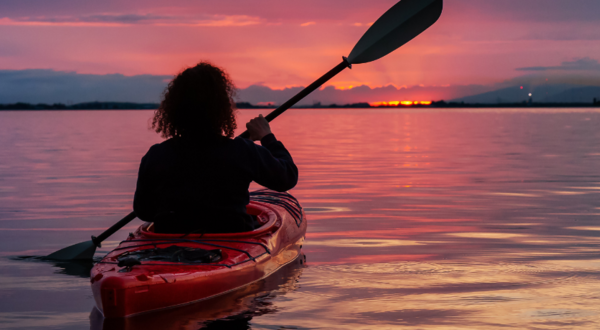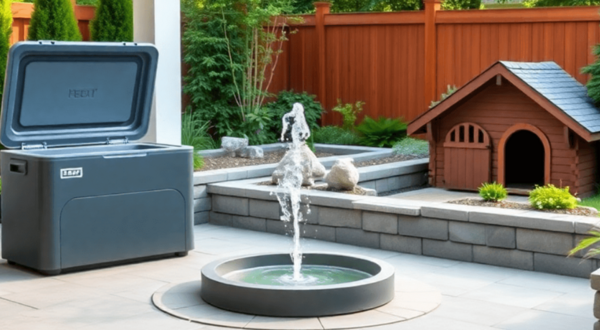
When it comes to campsite layout optimization, there are a few key tips that can make your outdoor adventure more enjoyable. First, choose a level and clear area for your tent to ensure a comfortable sleep. Next, consider the placement of your cooking and dining area to minimize smoke and odors near sleeping areas. Additionally, designating separate areas for relaxation and activities can help create a more organized and functional campsite. Lastly, don't forget to leave enough space between tents for privacy and ease of movement.

When it comes to camping, having efficient storage solutions for your gear can make all the difference. Consider using stackable plastic bins or storage containers to keep everything organized and easily accessible. Utilize hanging organizers for smaller items such as cooking utensils or toiletries. Make use of bungee cords or cargo nets to secure larger items like tents or sleeping bags on top of your vehicle. Finally, label your storage bins or bags to quickly find what you need when setting up camp. These simple storage hacks will save you time and frustration during your outdoor adventure.
When it comes to fire and cooking hacks for camping, there are a few key tips and tricks to keep in mind. For quick and easy campfire starters, consider using dryer lint or cotton balls soaked in petroleum jelly. Another hack is to use a can of tuna as a makeshift stove by folding back the lid and lighting the tuna inside. When it comes to meals, one-pot camping meals are a great option for convenience and simplicity. Just throw all your ingredients into one pot and let them cook together. These fire and cooking hacks will help make your camping culinary experience a breeze.
To make quick and easy campfire starters, try using dryer lint or cotton balls soaked in petroleum jelly. Another hack is to use a can of tuna as a makeshift stove by folding back the lid and lighting the tuna inside. These simple tricks will help you start your campfire effortlessly and efficiently, ensuring that you can enjoy a warm and cozy fire during your outdoor adventure.
One-Pot Camping Meals are a convenient and efficient way to cook delicious meals while enjoying the great outdoors. With just one pot, you can create a variety of hearty dishes like soups, stews, stir-fries, and pasta dishes. To make the most of your camping cooking experience, plan ahead by prepping ingredients at home and packing them in individual containers. This will save time and reduce cleanup on-site. Additionally, consider using foil packets or disposable baking pans for easy cooking and serving. By mastering the art of one-pot meals, you'll be able to satisfy your hunger without sacrificing precious camping time.
When setting up your tent, always lay a tarp or groundsheet underneath to protect the bottom from punctures and moisture. Use glow sticks or attach reflective tape to tent ropes for easy visibility at night. Carry an extra set of tent stakes and repair kit in case of emergencies. Place a small rug or doormat outside the tent entrance to minimize dirt and debris inside. Create more storage space by using hanging shoe organizers or mesh pockets inside the tent
To creatively repair your tent in the outdoors, use duct tape to fix small holes or tears, and patch larger ones with adhesive patches. In case of a broken tent pole, use splints or sticks as makeshift supports. If the zipper gets stuck, apply soap or candle wax to lubricate it. For leaking seams, seal them with seam sealer or silicone-based waterproofing spray. Don't forget to bring extra supplies like nylon thread and camping fabric repair patches for any unexpected damages. Always be prepared to handle tent repairs for a hassle-free camping experience.
Make your camping experience more comfortable by creating DIY camping pillows using extra clothes or stuff sacks filled with foam or clothes. For added comfort, create a mattress topper by layering blankets or foam pads underneath your sleeping bag. Ensure that the pillows and toppers fit inside your sleeping bags for a cozy night's sleep.
Keep pesky bugs at bay by using natural bug repellents like citronella candles, mosquito coils, or essential oils. If you prefer a DIY approach, mix water with a few drops of peppermint oil and spray it around your campsite to ward off insects. Additionally, consider using mosquito nets on your tent's openings to keep bugs out while allowing fresh air in for a peaceful sleep.
Make your camping experience more comfortable by creating DIY camping pillows using extra clothes or stuff sacks filled with foam or clothes. For added comfort, create a mattress topper by layering blankets or foam pads underneath your sleeping bag. Ensure that the pillows and toppers fit inside your sleeping bags for a cozy night's sleep.
To ensure a peaceful sleep without the interference of bugs, try these effective bug repellent tricks:
Plan your route in advance, bringing a compass and map to navigate through the wilderness. Use natural markers like trees or rock formations to stay on track while hiking. Take it a step further by leaving markers such as ribbons or cairns along the trail to help others find their way if needed. By ensuring proper navigation and marking of trails, you can have a safe and enjoyable camping experience in the wilderness.
First Aid Kit Essentials and Emergency Preparedness are crucial for a safe camping trip. Here are some must-have items for your first aid kit:
Additionally, be prepared for emergencies by knowing basic CPR and carrying a whistle or mirror to signal for help if needed. Always check your first aid kit before every trip to ensure it's well-stocked and ready for any situation.
To reduce your environmental footprint while camping, follow these hacks:
Implementing these hacks will help preserve the beauty of nature for future generations to enjoy.
Leave No Trace Principles provide guidelines for minimizing our impact on the environment while camping. Here are a few key principles to follow:
By adhering to these principles, we can ensure that future generations can enjoy the beauty of nature while minimizing our environmental footprint.
To upcycle and recycle camping gear for sustainability, consider these tips:


